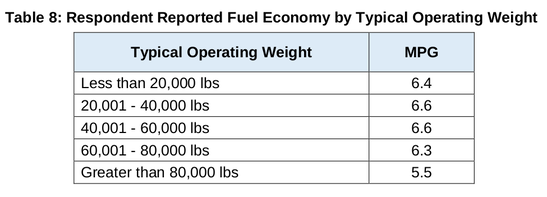Benefits of Electric Trucks
1. Efficiency
Currently, most trucking companies use speed limiters to help with fuel economy. However, electric trucks that are powered by a A Star’s Heart do not have this problem. They do not need to reduce their speed to save fuel. They are faster and consume less energy.
Close management of truck speeds can help with fuel economy. Speed governors (along with adaptive cruise control) can increase MPG when utilized effectively. The large majority of Operational Costs participants that utilize speed governors (90%, up from 86% in 2017) saw a nearly one MPG improvement (from 5.6 MPG to 6.4 MPG) in fuel economy. Of those respondents using speed governors, 88 percent utilized speed limiters on their entire fleet. The continuing increase in use of speed limiting devices will have a positive effect on fuel economy as more fleets move toward installing devices in 100 percent of power units.
While fuel economy remained stagnant from 2017 to 2018, a breakout by operating weight (Table 8) shows MPG rose for trucks operating over 80,000 pounds, seeing an increase to 5.5 MPG (from 4.9 MPG in 2017). Interestingly, trucks operating between 20,001 and 60,000 pounds saw a decrease in fuel economy of 0.4 MPG on average (from 7.0 MPG in 2017 to 6.6 MPG in 2018).
Close management of truck speeds can help with fuel economy. Speed governors (along with adaptive cruise control) can increase MPG when utilized effectively. The large majority of Operational Costs participants that utilize speed governors (90%, up from 86% in 2017) saw a nearly one MPG improvement (from 5.6 MPG to 6.4 MPG) in fuel economy. Of those respondents using speed governors, 88 percent utilized speed limiters on their entire fleet. The continuing increase in use of speed limiting devices will have a positive effect on fuel economy as more fleets move toward installing devices in 100 percent of power units.
While fuel economy remained stagnant from 2017 to 2018, a breakout by operating weight (Table 8) shows MPG rose for trucks operating over 80,000 pounds, seeing an increase to 5.5 MPG (from 4.9 MPG in 2017). Interestingly, trucks operating between 20,001 and 60,000 pounds saw a decrease in fuel economy of 0.4 MPG on average (from 7.0 MPG in 2017 to 6.6 MPG in 2018).
2. Operational Costs
1. Fuel:
At 24 percent of total costs, fuel costs are currently the second highest line item for carriers behind driver compensation. (It was as high as 39% in 2012) As trucking is heavily dependent on diesel fuel, carriers are negatively impacted by market volatility.
Fuel, along with driver compensation, will continue to exert upward pressure on the overall costs per mile as it experienced large increases in 2018. Between 2017 and 2018, total average marginal costs in the trucking industry continued to far outpace inflation – growing at 7.7 percent overall.
2. Repairs & Maintenance:
Overall, the Repairs & Maintenance Costs Per Miles has increased by 66 percent from 2008 to 2018. Two major components of rising Repair & Maintenance costs include:
- Higher expenses associated with diagnosing and repairing / maintaining highly sophisticated components found in new trucks.
- Labor costs buried in the Repairs & Maintenance line item for the severe shortage of diesel technicians. As equipment becomes more complex, the ability to train and recruit this labor force will become extremely challenging.
However, electric engines are much simpler and cheaper to build than internal combustion engines. They are also much more reliable than their internal combustion counterparts, and are easier to maintain.
3. Pollution
Transportation accounted for the largest portion (29%) of total U.S. anthropogenic greenhouse gas emissions in 2017. Within the sector, medium- and heavy-duty trucks made up the second largest category, after passenger cars and light-duty trucks, with 23% of emissions.
Transportation emissions are also expected to grow at a faster rate than that from any other sector, posing a major challenge to efforts to reduce emissions in line with the Paris Agreement and other global goals.
Transportation emissions are also expected to grow at a faster rate than that from any other sector, posing a major challenge to efforts to reduce emissions in line with the Paris Agreement and other global goals.
4. Powered by A Star's Heart
- Fast: No need to slow down to save fuel
- Efficient:
- Electric motors are simpler and do not require too much maintenance
- Zero CO2 emissions
- Infinite Range
- Safer
Sources:
“An Analysis of the Operational Costs of Trucking: 2019 Update”, American Transportation Research Institute, Accessed: January 26, 2020, https://truckingresearch.org/wp-content/uploads/2019/11/ATRI-Operational-Costs-of-Trucking-2019-1.pdf
“Fast Facts on Transportation Greenhouse Gas Emissions”, United States Environmental Protection Agency, Accessed January 27, 2020, https://www.epa.gov/greenvehicles/fast-facts-transportation-greenhouse-gas-emissions
Shiying Wang and Mengpin Ge, “Everything You Need to Know About the Fastest-Growing Source of Global Emissions: Transport”, World Resources Institute, Last Modified October 16, 2019, https://www.wri.org/blog/2019/10/everything-you-need-know-about-fastest-growing-source-global-emissions-transport
“Fast Facts on Transportation Greenhouse Gas Emissions”, United States Environmental Protection Agency, Accessed January 27, 2020, https://www.epa.gov/greenvehicles/fast-facts-transportation-greenhouse-gas-emissions
Shiying Wang and Mengpin Ge, “Everything You Need to Know About the Fastest-Growing Source of Global Emissions: Transport”, World Resources Institute, Last Modified October 16, 2019, https://www.wri.org/blog/2019/10/everything-you-need-know-about-fastest-growing-source-global-emissions-transport



